 Regia Marina: 8 Built 1929-33:
Regia Marina: 8 Built 1929-33:Italy: Dardo, Frecchia, Saetta, Strale
Greece: Hydra, Spetsai, Psara, Kountouriotis
WW2 Italian Destroyers
Poerio | Aquila | Mirabello | Leone | Sella | Sauro | Turbine | Navigatori | Freccia | Folgore | Maestrale | Oriani | Soldati | Medaglie d’OroWW2 Italian Torpedo Boats
Indomito | Audace | Audace(ii) | Pilo | Sirtori | La Masa | Generali | Palestro | Curtatone | Albatros | Spica | Pegaso | Ciclone | ArieteThe Freccia (or Dardo) class destroyer were a brand new league in destroyer design, with much streamlined and modern shapes, a clipper bow, initially beter speed and better range as a radical imporvements over the previous Turbine class. They however had issues in stability which required radical modifications with still poor seakeeping and from trials speed of 38 knots they were down to 30 knots in service. Their armament was also not improved compared to the Turbine class, but the fire control was. Only four were built for the Regia Marina, all lost in heavy fighting, and four more for Greece (Hydra class), with two sunk in 1941 and two surviving the war. First stop on out “final run” on Italian interwar destroyers. Next: Folgore, Maestrale, Oriani, and Soldati.
Design of the Freccia class
Development
With the Freccia/Dardo class (1930-32), consisting of four ships plus four exports, the Regia Marina put into service new, fast destroyer, with a displacement of about 1,500 tons according to pre-London treaty limits, and still featuring a compact armament of four Ansaldo 120/50 Mod. 1926 guns in two twin mounts fore and aft, 2 triple torpedo launchers and better AA than before. Besides their more developed, massive bridge, they also features a single, massive funnel characteristic of late Interwar Italian destroyers. They were also slightly faster than the Turbine and Sela/Sauro generation but had a mcuch better range. However by 1940 standards, they were poorly armed in terms of torpedoes. The British Royal Navy indeed featured quad torpedo tubes banks from 1933 onwards. There were however issues over the adoption of quad tubes banks, notably stability.
The Freccia was initially designed and a follow-up of the Turbine class, but just essentially an enlarged version of the previous Turbine. Four were ordered in 1928 after the final design was validated. They were completely different animals from the Navigatori class, which initially were rated as scout (cruisers). In 1933 a modified sub-class was ordered by Greece, forming the Kountouriotis class. The second series built with improvements consisted also of four ships, called the Folgore Class (or Dardo Class II Series). One of the key argment behind the Freccia design was the need for more speed, notably to face the fast French “contre-torpilleurs” designed to hunt them down.
They needed a fighting chance and through speed, regain some advantage in an encounter, choosing the moment of engagement and flee if needed. The earlier French Guepard class (1928) were indeed capable of 35.5 knots (65.7 km/h; 40.9 mph) but 40 kts on trials. So with 38 knots, the new destroyers of the Regia Marina could hit that mark. But compared to the previous Turbine class, “only” capable of 36 knots on sea trials, but often less in reality, 33 knots in combat order was the norm indeed. One specification, which also imposed a larger hull, was a greater range as well. So to reach 36 knots, they needed a new machinery, estimated to deliver 45,000 hp (34,000 kW) instead of 40,000 hp. In fact, the Turbines on trials already managed to achieve on a mile run 51,214 hp for 39.5kts.
With slightly larger turbines of a new type, and more modern Thornycroft instead of older Yarrow boilers, then a refined hull featuring a cripper bow for better seakeeping, it was hoped to reach 36 knots on trials, which were achieved with ease. The new hull was thus made a but larger (see below), but service speed was far less than expected at 30 knots. Fire control was however a leap forward.
Hull and general design


Comparison between the Turbine (top) and Freccia (bottom) (pinterest).
The Freccia class displaced 1,225 t (1,206 long tons) standard and 2,150 t (2,120 long tons) at full load, compared to 1,090 t/1,700 t FL for the Turbines, so a substantial 300 tonnes increase which needed to be compensated by extra power and finer lines for the hull. The choice to go for a classic sloped stem to a clipper bow was instrumental in shis, as well as slightly finer waterline entries, but it was introduced after Dardo and strale which had a less sloped stem. The new destroyers reached 96.15 meters (315 ft 5 in) in overall lenght (Turbine class 93.2 meters/305 ft 9 in) but for a beam of 9.75 m (32 ft) versus 9.2 (30 ft 2 in) and a draught between 3.3–4.3 m (10 ft 10 in–14 ft 1 in) depending on the load versus 3 m (9 ft 10 in) in order to keep both a good lenght//width ratio of 1/10 and enough buoyancy for stability.
But of course externall the changes were more radical. After the clipper prow, with a slightly taller forecastle and better sheer, the general prorportions remained about the same, but the bridge was blockier. Instead of a two-stepped strcucture, it was now most solid, still on two levels and with three faced, whereas the open wings were reduced and integrated aft of the bridge on the structure, not overhanging. The bridge was in general lower, with an extra open bridge, and supporting a massive fire control tower, followed by a short foremast and platforms fpr a projector and telemeters.
This was a pole, followed by a single, large funnel connected to the bridge, resminiscent of the Polish Grom class. Next the structure was interrupted by the two torpedo tubes banks and intermediary platform for another telemeter, and the quarterdeck house plus aft raked pole, on which was mounted the “X” twin turret. Note that their “clipper” bow was not a curved one, but just a better sloped version of the Turbine’s stem. All in all, they looked like a more compact, robust and modern design, unlike the Turbines. They had a crew of 185 with two service boats abadft the funnel under davits and life rafts. They had a complete set of Equipments, including smoke projectors, rails for 50+ mines, paravanes and a ginocchio towed torpedo (see below) giving them well rounded capabilities.
Powerplant
To reach 36 knots, the Freccia initially came out with a relatively similar engine as the Turbines, but in order to reach extra power iy was decided instead to give them more modern turbines, thanks to a broader beam. At first the figure expected was 50,000 hp, but their powerplant comprised two shafts driven by two Parsons turbines, in turn fed by three Thornycroft boilers (instead of Yarrow on the Turbine class) for an extra 4,000 shp (3,300 Kw) for a total of 44,000 hp (33,000 kW). This made up for a top speed on trials of 38 knots (70,38 kph) as expected, and down to 30 knots (56 km/h; 35 mph) in service, fully loaded. Again, it showed how much it was important, notably for propaganda purposes, to reach high speeds on a very light load, achieved in perfect conditions but never reproduced in practice.
The range, thanks to the broader beam and reworked fuel tanks, which could hold as much as 630 tonnes, was not of 4,600 nmi (8,500 km; 5,300 mi) at 12 knots (22 km/h; 14 mph) versus 3,200 nmi (5,900 km; 3,700 mi) at 14 knots (26 km/h; 16 mph) for the Turbines, but 3600 nm at 12 kts, albeit Conways confirms the figure of 4600 nm at 12 knots. This was logically less range than the Navigatori (3800 nm) which were supposed to be scouts. All this was because the adoption of these new low-consumption Thornycroft boilers, far more economical at cruise speed. This, beyond any other consideration, was to be the true success of this new class as planned. The lack of range was indeed criticized on the Turbines. However on trials, it was established they consumed more fuel at high speeds than expected. Worst still, thei speed trials showed they could make runs at 39 knots, but was completely unrealistic in combat conditions and they ended in fact slower than expected, bt worst still, despite all the efforts put into stability, they proved poor seaboats, rolling heavily. With wartime AA addition it was found necessary to add bilge keels and pour 90t of concrete in their double bottom. The problem was especially acute when they had depleted their fuel reserves, there was no compensation system. It was solved by filling the tanks with seawater, but this caused contamination issues. Will all this, their wartime top speed remained at 30 knots in pefect conditions, quickly degraded in heavy weather.
Armament of the Freccia class
Like their predecessors, the Freccia class had the same dual main gun mounts fore and aft, allowing to keep a good stability and keeping the metacentric height low, by having no paired superfiring guns (unlike French and British destroyers of the time). However this arrangement was still problematic: The paired guns had interference and poorer accuracy, and a single hit can disable half their artillery. They used the same mount as the Navigatori class, and same new fire control (see below).
Although not specifically designed for this with an elevation reduced to 45° and total absence of anti-aircraft aiming, they were still considered as dual purpose and usabled for anti-aircraft fire, provided with “shrapnel shells”. The latter created a wide cone (50 m or 160 ft) or deadly projectiles obliteraing any aicraft in the vicinity. The idea was developed in the interwar and also used extensvely by Japan.
Cannone da 120mm/50 OTO Modello 1926
Mount: 5.1 tons (5,552 kg), 252.0 in (6.400 m)
Shell: Separate, 23 kg AP, HE 51.8 lbs. (23.15 kg).
Propellant: 21.4 lbs. (9.7 kg)
Muzzle Velocity: 3,117 fps (950 mps) Later reduced to 3,018 fps (920 mps)
Range: 19,600 m
Rate of fire: 6-7 rounds per minute
The Navigatori were provided 182 rounds per gun so 1092 total. Standard outfit was 408 AP, 672 HE, 120 incendiary and 100 star shells, plus an unspecified number of ready rounds.
Fire Control
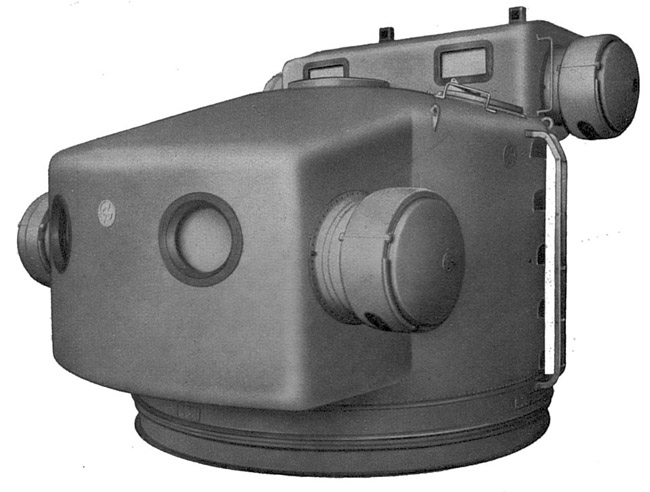
For the first time, Italian destroyers were fitted with a modern fire control system, inspired by the Navigatori class. Fire direction was optimized for daytime actions, with two three meters (10 in) Officine Galileo/Zeiss stereoscopic rangefinders. One set was on a platform aft of the bridge, with the main tower on the bridge’s roof containing the San Giorgio general aiming system. There was a second Zeiss/San Giorgio rangefinder positioned on the intermediary platfrom between TT banks. Night-time firing systems were only installed on some units well into WW2. Also, a San Giorgio kinematic teleinclinometer was placed under the crow’s nest. This was a considerable improvement over the previous Turbine class, and somewhat compensated by a loss in accuracy.
2-in (40mm/39) Vickers-Terni M1917
The anti-aircraft armament initially comprised the same two Vickers-Terni 1915 40mm/39 machine guns placed on either side on the forecastle, next to the forefunnel, as well as four Breda 13.2 mm machine guns in two twin mounts on the bridge’s wings, like the Turbine class.
Specs Vickers-Terni 1915:
Weight 550 lbs. (249 kg) including cooling water
Overall lenght 96 in (2.438 m), bore 62 in (1.575 m), 200 rpm cyclical, 50-75 rpm practical
Fired the HE or CP rounds of 2.95 lbs. (1.34 kg) at 2,000 fps (610 mps).
Maximum Effective Range: 1,200 yards (1,100 m)
Specs 13.2 mm Breda HMG:
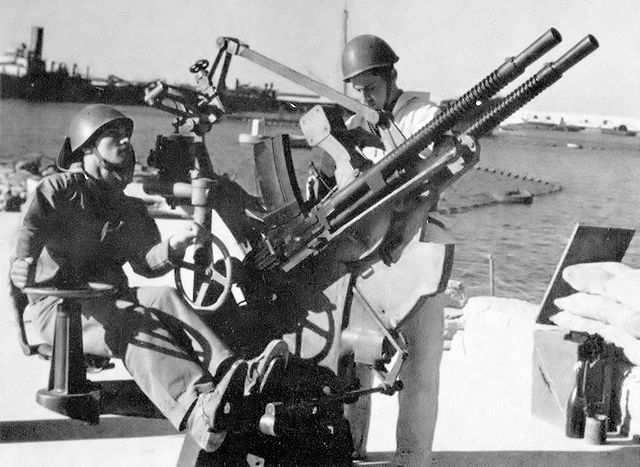
Specs (Modello 1931)
Gun Weight: 104.5 lbs. (47.5 kg), Bore Length 39.4 in (1.000 m). 500 rounds per minute cyclic.
Fired 5.4 in (13.7 cm) 0.28 lbs. (0.125 kg) rounds at 2,592 fps (790 mps), effective range: 2,200 yards (2,000 m).
533 mm Torpedoes
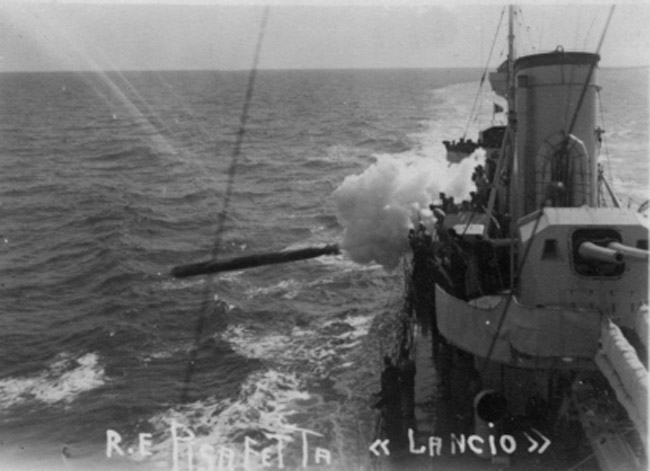
The ships like previous destroyers, were given the same two triple in-line torpedo launchers, 533 mm, San Giorgio type. They were placed in the axis, one between the two funnels and the second behind the aft funnel. The aiming was electrically controlled by the Fire Direction system and its two stations:
-One for daytime launching, located in the crow’s nest
-One for night launching, on the bridge.
They were likely given the 53.3 cm (21″) Si 270/533.4 x 7.2 “M” model. This was a model manufactured in Naples (Silurificio Italiano).
There were no reloads.
Specs:
Weight; 3,748 lbs. (1,700 kg)
Overall Length: 23 ft. 7 in. (7.200 m)
Warhead: 595 lbs. (270 kg)
Range/Speed settings: 4,400 yards (4,000 m)/46 kts, 8,750 yards (8,000 m)/35 kts, 13,100 yards (12,000 m)/29 kts
Powered by Wet-heater. Later versions went to 48/38/30 knots on the same ranges settings.
Ginocchio ASW Torpedo
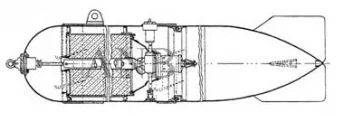 Underwater Weapons Directorate of La Spezia, table dated September 1931, longitudinal section src
Underwater Weapons Directorate of La Spezia, table dated September 1931, longitudinal section src
In the original design, the ships carried a Ginocchio “towing torpedo” GP1927/46 T. It was eliminated in 1940. Developed in the 1930s, it was a promising new device. These weapons were used during the First World War by light units such as MAS. It could be towed at variable speeds from 2 to 20 knots, could dive to depths ranging from 17 to 33 m. Depending on the length of the towing cable, maintaining a predetermined immersion, they were ready to explode due to the impact effect or thanks to an electrical ignition circuit.
Modified and improved after the WW2, the modello 46/1927 type GP (great depth) had a 46 kg charge, automatic trigger, and became widespread on torpedo boats and VAS ships. See also.
ASW Grenades
Two racks were there from the start, but two launchers were installed at the stern in 1939-40 for the launch of 50 and 100 kg depth charges. Stocks were later strengthened with more modern charges, some of which were German WB D of 125 kg and WB F of 60 kg as well as 30 kg “intimidatory” bombs, which were a warning charge to force a submarine to surface.
The launchers were trainable mortars used to project 100 kg (220 lbs.) DCs, normally fired at a 45 degree angle.
The standard depth charges while in servicee were likely the following:
B TG Monc. 50/1927 4 Reg. (1927): 110 lbs. (50 kg) for 20, 40, 70 and 100 m (65, 130, 230 and 330 feet).
B TG Monc. 100/1927 4 Reg. (1927): 220 lbs. (100 kg) for 25, 50, 75 and 100 m (80, 165, 250 and 330 feet).
B TG Monc. 50/1936 (1936): 141 lbs. (64 kg) or 110 lbs. (50 kg), unknown settings.
Mines
For minelaying all units were equipped with rails, and could carry up to 54 Vickers-Elia mines (760 kg) or 56 Bollo mines (590 kg). During the war, seven ships had their rails lengthened to lay 86 mines of the P.200 type or 104 Bollo type, and German antenna mines.
-Vickers Elia (VE) 1,676 lbs. (760 kg), 320 lbs. (145 kg) WH
-Bollo Mines
Paravanes
For protection in 1940, type C paravanes were mounted at the stern of all ships. They were lowered down via their lattice support gear arms, but once in water, they created a strong reduction in agility by the drag they created, reducing their practical use. They were however were detrimental to stability and removed in 1942.
Smoke Projectors
To complement protection, all Freccia class destroyers were equipped with admiralty type type smoke generators, placed at the base of the funnels, in complement to the diesels located aft on the starboard side. Later in WW2 they were replaced by more efficient chlorohydrin systems.

Old profile
⚙ specifications as built |
|
| Displacement | 1,225 t standard, 2,150 t full load |
| Dimensions | 96.15 x 9.75 x 3.3m (315 ft 5 in x 32 ft x 10 ft 10 in) |
| Propulsion | 2 shafts; 2 GST, 3 Thornycroft boilers, 44,000 hp (33,000 kW) |
| Speed | 38 kts (1940 30 kts) |
| Range | 4,600 nmi (8,500 km; 5,300 mi) at 12 knots (22 km/h; 14 mph) |
| Armament | 2×2 120 mm, 2× 40 mm, 4×2 13.2 mm, 2×3 533 mm, 52 mines |
| Crew | 185 |
Modifications
Albeit streamlined and looking very modern, the Freccia class had glaring stability, speed and seakeeping issues. Modifications were don ealready in the interwar. The low stability called for the installation of additional side oil fuel tanks, and in practive she ships did not consumed all their fuel stowage in exercises, which severely limited their peacetime endurance. Subsequently the first system installed were piping and pumps to replaced fuel by seawater, which in turn, affected fuel quality. This needed a lot of maintenance. Besides a liquid ballast (extra fuel), all four ships received between 90 and 100t of solid concrete ballast in the double bottom, new bilge keels, and cutting down some structures. The displacement rose overall from from 1200 to almost 1400t with a serious loss of the speed, down to 30 knots as said above.
In wartime given their stability issues, their AA was reinforced only in a moderate way: In 1939-1940, all had their old 40mm/39 and twin Breda 13.2mm/76 replaced by between five and six 20mm/65 Breda 1939/1940 cannons and two 2 DC throwers.
In 1942-1943, Dardo, Freccia and Saetta still around lost three Breda 20mm and the aft TT banks, and were provided two 37mm/54 Breda 1939 AA guns (in place of the TT banks), and three twon 20mm/70 Scotti-Isotta Fraschini 1939 autocannons. It seems no radar was installed while in service.
The Greek Hydra class

The Greek Navy ordered four destroyers from Italy in 1929, to a modified design, as the Kountouriotis class. The main difference was the adoption of four single 120 mm Ansaldo Model 1926 instead of twin turrets and modifications of the bridge.
Hydra was built by Odero, Sestri Ponente, launched 21 October 1931 and commissioned November 1932. She was Sunk by German aviation in Piraeus on 22 April 1941.
Spetsai was built by Odero, Sestri Ponente and commissioned May 1933. She served in World War II on the allied side and was decommissioned in 1946, Scrapped 1947.
Psara was built by Odero, Sestri Ponente, commissioned May 1933, sunk by German aviation like Hydra in Piraus on 20 April 1941.
Kountouriotis was built by Odero, Sestri Ponente, launched 29 August 1931 and commissioned in November 1932. She served with the allies in WW2 and was decommissioned and scrapped in 1946.
Spetsai and Kountouriotis were under RN supervision as part of the Eastern Mediterranean fleet (Free Greek Navy) until late 1943 before being laid up at Port Said, Egypt to provide the surviving Italian destoryers (co-belligerence ships) for spare parts, while the crews were needed for new ships built in the UK. The other reason was their appalling stability issue, probably worse than the Freccia class due to heir superfiring artillery and taller bridge.
Career of the Freccia class
 Dardo (1930)
Dardo (1930)
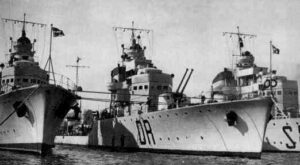
Dardo (“spear”) was built by Odero, Sestri Ponente, laid down at an unknown date in 1929, launched on 6 September 1930, and completed on 25 January 1932. She was assigned to the same unit as her sisters in 1932. In 1936-1938 she took part in the Spanish Civil War. In June 1940 she was in the 7th Destroyer Squadron with Freccia, Saetta and Strale. On 7 July at 14:10 she left Taranto to escort the battleships Giulio Cesare and Conte di Cavour and the 8 DS (Folgore, Fulmine, Lampo and Baleno) escorting a convoy to Libya (troop transports Esperia and Calitea, Marco Foscarini, Francesco Barbaro and Vettor Pisani wit the TBs Orsa, Procione, Orione, Pegaso, Abba and Pilo close in). However had to come back due to engine issues. Next she was joined with the I and II Naval Squadron taking part in the battle of Punta Stilo on 9 July.
On 27 November, she left Naples with the Giulio Cesare and Vittorio Veneto and the 13th DS (Granatiere, Fuciliere, Bersagliere, Alpino) for the inconclusive battle of Cap Teulada. In 1941 she underwent modernization (AA) and on 28 March escorted, a convoy from Naples to Tripoli with one ship lost to HMS Utmost. She provided assistance to the sinking cargo Ruhr towed to Trapani.
On 9 April she sailed from Naples to Tripoli, a success.
On 12 April she escorted from Noli with the DDs Vivaldi and Malocello a convoy to Malta (success).
On 16 April she tried to rescue survivors of the Tarigo convoy.
On 11-14 May she escorted a convoy to Tripoli (success)
On June 3, she escorted the convoy “Aquitania” to Tripoli which ended with the battle of Kerkenna attacked by planes that hit Montello, Beatrice Costa.
On 17 August, with Freccia and Euro, TBs Procione, Pegaso and Sirtori, she took part in a convoy of 4 cargo ships when the Dutch submarine O 23 torpedoed the Maddalena Odero, returning to Lampedusa under escort. She reached Tripoli on the 19th.
On 1 September, she left Naples in escort of 5 cargo ships attacked by air on the 3rd: Andrea Gritti sunk, Francesco Barbaro damaged, towed to Messina by Dardo.
Later that year she received ballast modernization from September 1941, but while she was worked in dock in Palermo, she listed capsized and sank, with 40 men. Recovered in February 1942, she was towed to Genoa, drydocked repaired, until June 1943 and she also received modern AA and a EC3/ter «Gufo» radar.
In July, she was damaged by a turbine explosion. The armistice was announced when she was still in repairs on 9 September 1943. Not able to move she was captured by the Germans. She so far performed 89 missions over 33,952 miles but 748 days under repair. The Germans completed her repairs, and she became TA 31 in the Kriegsmarine, operaitonal from 17 June 1944 with an extra 37 mm FLAK. She took part in the action of Bocca di Serchio, but worn out after many breakdowns, was disarmed in October. On the 25th in an air raid in Geno she was badly damaged. She was scuttled on 24 April 1945. The wreck was later scrapped postwar.
 Freccia (1930)
Freccia (1930)

Freccia (“arrow”) was built by CT Riva Trigioso, launched 3 August 1930, and completed 21 October 1931. Freccia was assigned to the 7th Squadron of destroyers, composed of four ships of her class. In August 1937 she took part in the Spanish civil war, being sent to the Sicilian Channel on 9 August and on the 14th she shadowed a Panamanian-flagged tanker with the TB Cigno and the Spanish Nationalist auxiliary cruisers Puchol and Mallorca. Freccia’s commander believed she was the disguised Republican tanker Campeador (actually the George W. McKnight, from the American Panama Transport Company, chartered by German Esso). The captain was American, the crew German. At 21:15, Freccia launched five torpedoes, one struck home abreast the stern. She then proceeded to fire 53 rounds until, badly damaged, the tanker was abandoned. Later she was assisted by the tanker British Commodore and Italian tug Centauro. The cargo was recovered by British tanker off Bizerte, while the ship survived, and was repaired, later becoming the Esso Edinburgh.
Next, Freccia took part in the Italian invasion of Albania as part of the 4th Naval Group, supportig landings at Santi Quaranta on 7 April 1939 with Baleno (150 marines from the San Marco Battalion). They were covered by their main guns.
From June 1940 she was found escorting Axis convoys to Libya, Greece and Tunisia as leader of the 7th Squadron. She took part in the battle of Calabria on 9 July 1940 and battle of Cape Spartivento. On 15 June 1942 in Operation Vigorous from Alexandria, she rescued survivors from Trento, sunk bytorpedo bombers and HMS Umbra.
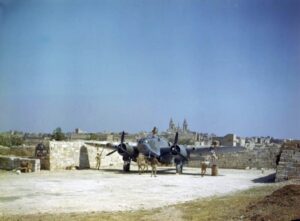 Freccia took part in several convoys. On 21 February 1941, this was with three Axis merchant ships from Tripoli, ambushed by HMS Regent. The Menes was hit amidships but Freccia depth charged and damaged the submarine with Turbine. The German cargo was towed to safety by Saetta. On 11 December 1941, Freccia escorted the transport Calitea when she was torpedoed and sunk by HMS Talisman. She depth charged the latter, which surfaced, badly damaged. She rescued 230 survivors. On 28 July 1942 she was in convo when attacked by nine Beauforts torpedo bombers (39 Sqn Malta) which bombed Monviso, escorted by Freccia underway to Benghasi. She managed wioth a TB to shoot down two bombers, but Monviso survived and was towed to Navarino. On 6 September 1942, while escorting Luciano Manara and Ravello from Taranto to Benghasi, the convoy under torpedo attack by Malta’s Beauforts. The many destroyers shot down two Beauforts and two supporting Beaufighters but Luciano Manara was badly damaged, taken in tow, and beached in Arillas bay, Corfu. Luciano Manara survived the war. On 29 December 1942, Freccia, now equipped as leader with the radar warning system Metox was unabled to prevent the ammo transport Iseo to be hit by an aerial torpedo while underway to Tunis. She rescued her survivors and was detached to reinforce the escort of a two-German merchant convoy. Later she was modernized at Genoa when bombed and sunk at dock, by RAF Lancasters on 8 August 1943. She was refloated and scrapped in 1949.
Freccia took part in several convoys. On 21 February 1941, this was with three Axis merchant ships from Tripoli, ambushed by HMS Regent. The Menes was hit amidships but Freccia depth charged and damaged the submarine with Turbine. The German cargo was towed to safety by Saetta. On 11 December 1941, Freccia escorted the transport Calitea when she was torpedoed and sunk by HMS Talisman. She depth charged the latter, which surfaced, badly damaged. She rescued 230 survivors. On 28 July 1942 she was in convo when attacked by nine Beauforts torpedo bombers (39 Sqn Malta) which bombed Monviso, escorted by Freccia underway to Benghasi. She managed wioth a TB to shoot down two bombers, but Monviso survived and was towed to Navarino. On 6 September 1942, while escorting Luciano Manara and Ravello from Taranto to Benghasi, the convoy under torpedo attack by Malta’s Beauforts. The many destroyers shot down two Beauforts and two supporting Beaufighters but Luciano Manara was badly damaged, taken in tow, and beached in Arillas bay, Corfu. Luciano Manara survived the war. On 29 December 1942, Freccia, now equipped as leader with the radar warning system Metox was unabled to prevent the ammo transport Iseo to be hit by an aerial torpedo while underway to Tunis. She rescued her survivors and was detached to reinforce the escort of a two-German merchant convoy. Later she was modernized at Genoa when bombed and sunk at dock, by RAF Lancasters on 8 August 1943. She was refloated and scrapped in 1949.
 Saetta (1932)
Saetta (1932)
Saetta (“lightning”) was built by CT Riva Trigioso, launched 17 January 1932, completed 10 May 1932. In 1936-1938 she took part in the Spanish Civil War. On 11 August 1937 she torpedoed and shelled the Spanish Republican tanker Campeador (or assumed to be) with her sister Freccia in the Strait of Sicily (12 killed)n causing an international incident in the US and Germany when revealed. In June she was part of the 7th DS with her three sisters. At 14.10 on 7 July, she left Tarantowith Giulio Cesare and Conte di Cavour and 8th DS as a distant escort for a convoy to Libya, later joining the I and II NS at the Battle of Punta Stilo on 9 July. She also took part in the Battle of Cape Teulada. She was modernized in early 1941 and on 22 January escorted a Naples-Trapani convoy with Freccia, troop transports Marco Polo, Conte Rosso, Esperia and Victoria anf th 14th DS in distant support. On 5-7 February she escorted another Naples-Tripoli convoy later joined by the light cruiser Bande Nere with Marco Polo, Conte Rosso, Esperia and Calitea and back on 9-11 February. On 21 February with Freccia and Turbine she escort teh german transports Heraklea, Maritza and Menes (Regent torpedoed Menes, see above.)
On 24 February this was a Naples-Tripoli with Baleno, Geniere and Camicia Nera, 2 TBs, troopsips Marco Polo, Conte Rosso, Esperia and Victoria, Diaz and Bande Nere, Ascari and Corazziere in dstant cover. (Upright torpedoed Diaz). On 2-5 April, she made a Naple-Tripoli with Turbine and the Orsa, Alicante, Tembien, Maritza, Procida and Santa Fe (success).
From 21 to 24 April thse were the transports Giulia, Castellon, Arcturus and Leverkusen, Naples-Tripoli, another win. On 1 May she escorted five merchantmen attacked by HMS Upholder, Arcturus was was sunk, but Leverkusen, badly damaged, was towed by Saetta, when finished off by another torpedo.
On 21 July she escortd another convoy with Folgore, Fulmine and Euro (Maddalena Odero, Nicolò Odero, Caffaro and Preussen) on Naples-Tripoli, later the tanker Brarena, destroyer Fuciliere and TB Pallada. They were attacked by Fairey Swordfish (830 Sqn) next day off Pantelleria, Preussen and the Brarena sank.
On 23 November with Usodimare, she escorted Fabio Filzi from Trapani to Tripoli and on 13 December, in operation «M 41», left Taranto to Benghazi, with Malocello and Pegaso escorting the Ankara alone. On 16 December she made another Taranto-Tripoli, with Pegaso, and the German freighter Ankara, diverted to Benghazi.
On 14 June 1942 she took part of the Battle of Mid-June, assisting Trento with Pigafetta and Camicia Nera.
Later in June with da Recco, she escorted Monviso and Ankara to Libya, ambushed by a submarine, Saetta depht charge her for half an hour and then was attacked by aircraft and with Da Recco covered the merchantmen with smoke screens. They shared a torpedo bomber and arrived to Benghazi and back (other attacks, but they went through).
On 17 August under command of Lt CdrEnea Picchio she escorted Nino Bixio and Sestriere from Benghazi to Brindisi with Da Recco, TBs Castore and Orione, when at 15.35Bixio was torpedoes by HMS Turbulent, loaded with POWs (434 dead), but she stayed afloat and was towed by Saetta safely back to Navarino for 24h.
In August she escorted Milano and Aventino through air attacks, diverted to Greece, and then started again and arrived in Benghazi. In early 1942 she was modernized, overhauled and modified with a fast towing equipment, for towing to Libya disarmed submarines converted into floating fuel depots, notably Domenico Millelire (GR 248) on 13 December 1942 with 443 tons of diesel fuel.
On 4 October with Camicia Nera, she joined the escort of Sestriere, from Brindisi to Benghazi with 3030 tons of fuel, 70 tons of ammunition, 28 tanks, 144 vehicles, 1060 tons of other materials. They were attacked by US bombers, but arrived on 7 October.
She later had her lenghy refit, and more AA and in early 1943, she towed the disabled TB Lince and freighter Ankara. On 3 February 1943 she left Bizerta escorting the large tanker Thorsheimer to Naples, with Clio, Monsone, Uragano and Sirio. Off Tunisia, Uragano struck a mine and sank three hours later. Saetta and Clio provided assistance, but ten minutes later Saetta also hit a mine amidships. She broke in two and sank in less than a minute 27 miles from the “Isle of Dogs”. 39 survivors were recovered from the wreck after two days, 170 men went down including captain Picchio, later awared a Gold Medal for military valor. Saetta performed 163 war missions (92 convoy escort) over 64,458 miles and 252 days at sea.
 Strale (1931)
Strale (1931)
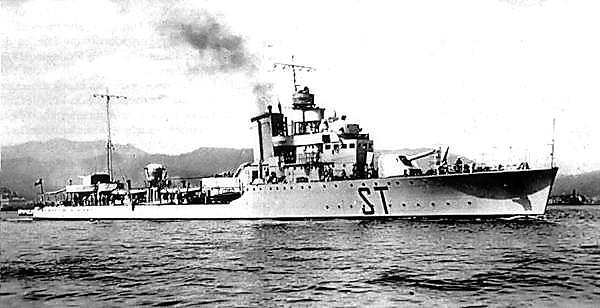
Strale (“Ray”) was built at Odero, Sestri Ponente, launched 26 March 1931, completed 6 February 1932. In 1936-1938 she took part in the Spanish Civil War. Like her sister she started June 1940 as part of the 7th DS with her sisters. On 13 June 1940 she spotted the submarine HMS Odin, surfaced in the Gulf of Taranto. She charged and opened fire, launched torpedoes and trying to ram the submarine which submerged and also launched a torpedo but missed. Depth charges were sent and Strale claimed a kill (she was in fact sunk later by Baleno).
At 14.10 on 7 July she left Taranto in distant support for a convoy to Libya but was soon back due to some mechanical issues.
In early 1941 she was repaired and then modernized and on 17 January, ran aground on the Kerkenna shoals with the Marco Foscarini she escorted. Both units were later refloated and towed to port by Papa.
On 28 March she she was in escort with Folgore and Dardo, on Naples-Tripoli, for Galilea, Heraklea, Ruhr, Samos and Adana (Utmost sank Heraklea and damaged Ruhr) and she arrived in Tripoli on the 30th. She was in another convoy on 21-24 April with the Giulia, Castellon, Arcturus and Leverkusen to Tripoli from Naples and on 1 May same (HMS Upholder attack, Arcturus, Leverkusen sunk).
On 16 May she left Naples in escort for Preussen, Sparta, Capo Orso, Motia and Castelverde and tankers Panuco and Superga, wcich arrived the 21st (collision between Preussen and Panuco, while HMS Urge missed Capo Orso and Superga). On 13 August she made another Naples-Tripoli with the Vivaldi, Malocello, Folgore and Fulmine, Orsa, for the Andrea Gritti, Rialto, Vettor Pisani, Francesco Barbaro and Sebastiano Venier which arrived on the 15th through air attacks.
On September 1st, she was in another Naples-Tripoli escorting the Andrea Gritti, Rialto, Vettor Pisani, Sebastiano Venier and Francesco Barbaro. Air attack, Andrea Gritti on fire, blew up. Francesco Barbaro damaged, towed to Messina by Dardo with Ascari and Lanciere.
On 5 September on a Tripoli-Naples with Da Recco, Freccia and Folgore, then Circe, she escorted the Ernesto, Col di Lana and tanker Pozarica when they were ambushed on 7 September (Ernesto torpedo damaged by the Dutch O21 off Pantelleria). Strale towed her to Trapani with Circe. On 24 September she escorted the transports Amsterdam, Castelverde and Perla (possible attack off Pantelleria), which arrived in Libya. On 25 October she left Benghazi escorting the Tinos and Capo Orso. Force K (Aurora and Penelope, DDs HMS Lance and Lively) left Malta in interception but failed so they arrived at Brindisi on the 28th.
On 23 November she escorted Bosforo from Benghazi to Brindisi.
On 13 December she escorted with Turbine, «M 41» steamers Iseo and Capo Orso from Argostoli to Benghazi but the operation was cancelled and the merchantmen collided by returning to port.
On 21 February 1942 she took part in «K 7» with Premuda, Zeno, Vivaldi and Malocello, Pallade, the transports Monginevro, Ravello and Unione in a Messina-Tripoli.
On 31 March she escorted the steamer Bosforo back from Benghazi to Brindisi whe she was torpedoed by HMS Proteus and sank while under tow by Strale.
On 18 April she rescued the crew of the German steamer Bellona (torpedoed by HMS Torbay).
On 20 June she left Naples with Recco and Centauro in escort for the steamer Reichenfels to Tripoli (290 men, 4 tanks, 376 vehicles, 638 t of fuel, 7117t of supplies), first mission ofor ehr new commander, having problem maintaining the course and formation, and Strale was moved to the stern of the convoy and ran aground off Ras el Amar during the night. Centauro, sent by Da Recco tried assist her, but she was firmly stuck and too badly damaged. She esvacuated her crew. On 6 August she was finished off by HMS Turbulent after 106 missions over 45,143 miles and 235 days at sea.
Read More/Src
Books
Erminio Bagnasco e Enrico Cernuschi. Le navi da guerra italiane 1940-1945. Parma, Ermanno Albertelli Editore, 2005
Brescia, Maurizio (2012). Mussolini’s Navy: A Reference Guide to the Regina Marina 1930–45. NIP
Campbell, John (1985). Naval Weapons of World War Two. NIP
Fraccaroli, Aldo (1968). Italian Warships of World War II. Shepperton, UK: Ian Allan.
Roberts, John (1980). “Italy”. In Chesneau, Roger (ed.). Conway’s All the World’s Fighting Ships 1922–1946.
Rohwer, Jürgen (2005). Chronology of the War at Sea 1939–1945: The Naval History of World War 2 (3rd Revised ed.). NIP
Smigielski, Adam (1995). “Italy”. In Chumbley, Stephen (ed.). Conway’s All the World’s Fighting Ships 1947-1995. NIP
Whitley, M. J. (1988). Destroyers of World War 2: An International Encyclopedia. NIP
Links
on navypedia.org/
on web.archive.org/ Dardo.html
trentoincina.it/ Dardo
trentoincina.it/ Freccia
trentoincina.it Strale
trentoincina.it/ Saetta
web.archive.org warshipsww2.eu/s
naval-history.net 24NOV02
naval-history.net 20JUL01
naval-history.net 30MAR02
naval-history.net 31APR02
naval-history.net 31APR01
naval-history.ne 32MAY01
naval-history.net 33JUN01
naval-history.net 35AUG02
naval-history.net 35AUG01
naval-history.net 39DEC01
forum.axishistory.com
it.wikipedia.org Classe_Dardo
en.wikipedia.org Freccia-class_destroyer
3D
None found
Video
None found


 Latest Facebook Entry -
Latest Facebook Entry -  X(Tweeter) Naval Encyclopedia's deck archive
X(Tweeter) Naval Encyclopedia's deck archive Instagram (@navalencyc)
Instagram (@navalencyc)


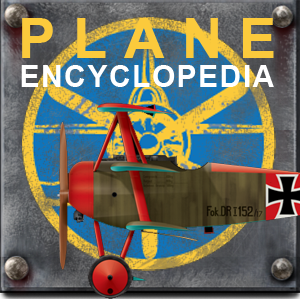
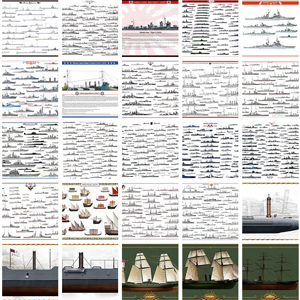

 French Navy
French Navy Royal Navy
Royal Navy Russian Navy
Russian Navy Armada Espanola
Armada Espanola Austrian Navy
Austrian Navy K.u.K. Kriegsmarine
K.u.K. Kriegsmarine Dansk Marine
Dansk Marine Nautiko Hellenon
Nautiko Hellenon Koninklije Marine 1870
Koninklije Marine 1870 Marinha do Brasil
Marinha do Brasil Osmanlı Donanması
Osmanlı Donanması Marina Do Peru
Marina Do Peru Marinha do Portugal
Marinha do Portugal Regia Marina 1870
Regia Marina 1870 Nihhon Kaigun 1870
Nihhon Kaigun 1870 Preußische Marine 1870
Preußische Marine 1870 Russkiy Flot 1870
Russkiy Flot 1870 Svenska marinen
Svenska marinen Søværnet
Søværnet Union Navy
Union Navy Confederate Navy
Confederate Navy Armada de Argentina
Armada de Argentina Imperial Chinese Navy
Imperial Chinese Navy Marinha do Portugal
Marinha do Portugal Mexico
Mexico Kaiserliche Marine
Kaiserliche Marine 1898 US Navy
1898 US Navy Sovietskiy Flot
Sovietskiy Flot Royal Canadian Navy
Royal Canadian Navy Royal Australian Navy
Royal Australian Navy RNZN Fleet
RNZN Fleet Chinese Navy 1937
Chinese Navy 1937 Kriegsmarine
Kriegsmarine Chilean Navy
Chilean Navy Danish Navy
Danish Navy Finnish Navy
Finnish Navy Hellenic Navy
Hellenic Navy Polish Navy
Polish Navy Romanian Navy
Romanian Navy Turkish Navy
Turkish Navy Royal Yugoslav Navy
Royal Yugoslav Navy Royal Thai Navy
Royal Thai Navy Minor Navies
Minor Navies Albania
Albania Austria
Austria Belgium
Belgium Columbia
Columbia Costa Rica
Costa Rica Cuba
Cuba Czechoslovakia
Czechoslovakia Dominican Republic
Dominican Republic Haiti
Haiti Hungary
Hungary Honduras
Honduras Estonia
Estonia Iceland
Iceland Eire
Eire Equador
Equador Iran
Iran Iraq
Iraq Latvia
Latvia Liberia
Liberia Lithuania
Lithuania Mandchukuo
Mandchukuo Morocco
Morocco Nicaragua
Nicaragua Persia
Persia San Salvador
San Salvador Sarawak
Sarawak Uruguay
Uruguay Venezuela
Venezuela Zanzibar
Zanzibar Warsaw Pact Navies
Warsaw Pact Navies Bulgaria
Bulgaria Hungary
Hungary

 Bundesmarine
Bundesmarine Dutch Navy
Dutch Navy Hellenic Navy
Hellenic Navy Marina Militare
Marina Militare Yugoslav Navy
Yugoslav Navy Chinese Navy
Chinese Navy Indian Navy
Indian Navy Indonesian Navy
Indonesian Navy JMSDF
JMSDF North Korean Navy
North Korean Navy Pakistani Navy
Pakistani Navy Philippines Navy
Philippines Navy ROKN
ROKN Rep. of Singapore Navy
Rep. of Singapore Navy Taiwanese Navy
Taiwanese Navy IDF Navy
IDF Navy Saudi Navy
Saudi Navy Royal New Zealand Navy
Royal New Zealand Navy Egyptian Navy
Egyptian Navy South African Navy
South African Navy






























 Ukrainian Navy
Ukrainian Navy dbodesign
dbodesign